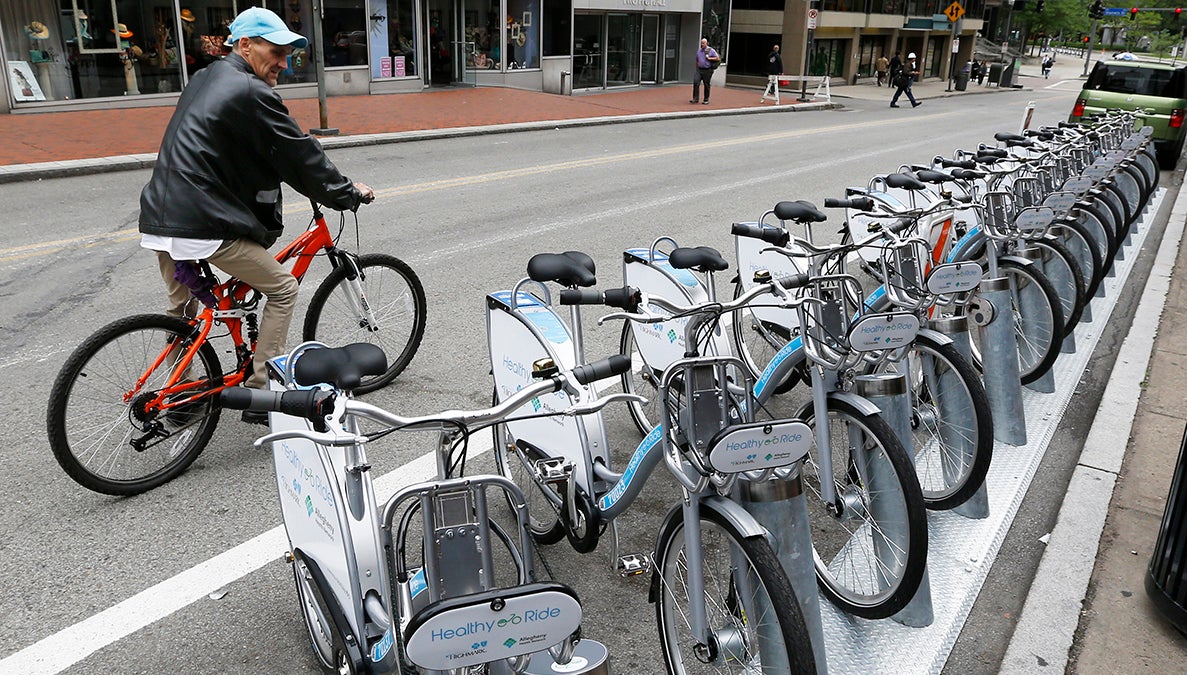Data doesn’t solve problems, but it sure can help

Where one can find a Healthy Ride bikeshare station is one of more than 150 data sets available through the Western Pennsylvania Regional Data Center’s open data portal. (AP Photo/Keith Srakocic)
The Western Pennsylvania Regional Data Center is the repository for more than 150 data sets from Pittsburgh and Allegheny county government, as well as organizations throughout the region.
Bob Gradeck can’t stand the term “data-driven.”
It might seem odd that the project director of the Western Pennsylvania Regional Data Center would recoil at a data-centric phrase, but Gradeck sees data as tools and not answers.
The WPRDC is the repository for more than 150 data sets from Pittsburgh and Allegheny County government, as well as organizations throughout the region.
“Data can inform you, but if you’re being driven by data, you leave yourself open to a really bad algorithm or somebody’s bad assumptions or their biases,” he said. “Data is not perfect.”
When it comes to tackling regional problems such as affordable housing or transportation, there’s no substitute for talking with people, but particularly people who can easily access city and county information.
Gradeck said the open data portal is the most visible part of WPRDC — there, anyone can check out data sets on home prices, greenways, crime, or 150 other data sets. They can be downloaded and made into charts or graphs or apps to better inform decisions, or just conversations.
Before the project started, many departments shared information, but there wasn’t much direction to it, said Gradeck.
“I think we’ve made a lot of great progress. The way that we’ve been really inclusive about encouraging community participation in this work, responding to community feedback, and building around needs, not just checking a box on the mayor’s to-do list.”
Over the past year, from 2015 to 2016, the number of users and the length of users’ sessions have doubled. They’re seeing more community users, said Gradeck, as well as greater coordination between city and county departments.
“A lot of the conversations that happen between the city and the county now that everybody’s on the same page with data are happening because you know people see the opportunities there.
The WPRDC coalesced in 2015, funded by grants from the Richard King Mellon Foundation, and the Heinz Endowments, with support from the University of Pittsburgh. That initial funding also helped fund teams in city and Allegheny County governments. Together, they worked out how to share data, and how to make it accessible to all users.
The data center regularly meets with community user groups, organized around issues such as land use or transportation. As the project nears its midway point, Gradeck said his team will continue to convene not just data, but people.
“It’s not just, ‘we’re going to build this tool,’ but ‘what are the needs out there, what are the objectives of the people that we work with, and how can we work to meet them?’”
In the coming months, WPRDC will work to create a financial sustainability plan.
Editor’s note: This article has been updated to more accurately reflect the amount of users and length of user sessions on WPRDC’s open data portal.
WHYY is your source for fact-based, in-depth journalism and information. As a nonprofit organization, we rely on financial support from readers like you. Please give today.


